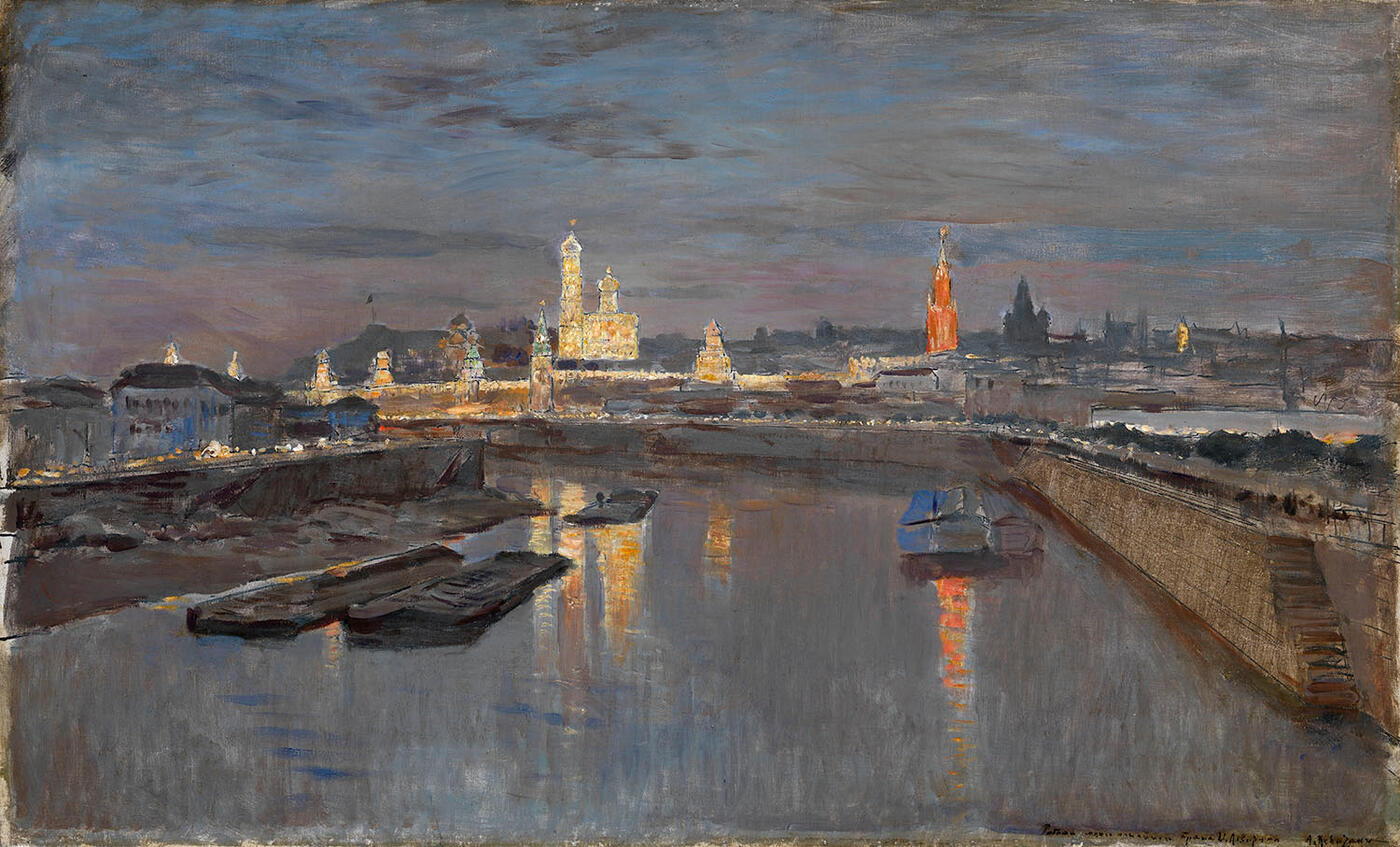MacDougall's Russian Art Auctions 27-30 May 2012
27 May 2012

* 31. LEVITAN, ISAAK (1860-1900)
The Illumination of the Moscow Kremlin Dedicated to the Coronation of Nicholas II, 18 May 1896, inscribed with an authentication by the artist’s brother, A. Levitan.
Oil on canvas, 50 by 81.5 cm.
400,000–600,000 GBP
Provenance: Antique Salon J. Dazario, St Petersburg–Moscow (label on the stretcher).
Acquired by the father of the present owner.
Private collection, Israel.
Authenticity certificate from the expert V. Petrov.
Exhibited: Collector’s Choice, Bezalel National Museum, Jerusalem, March–April 1964, No. 85.
Isaak Levitan 1860–1900. Sketches & Paintings, Tel Aviv Museum of Art, Tel Aviv,
24 July–28 September 1991.
Literature: Exhibition catalogue, Collector’s Choice, Jerusalem, 1964, p. 16, No. 85, listed.
Exhibition catalogue, Isaak Levitan 1860–1900. Sketches & Paintings, Tel Aviv, 1991, p. 25, illustrated.
A. Lurie, Treasured in the Heart: Haim Gliksberg’s Portraits, Tel Aviv, 2005, p. 19, illustrated.
A landscape artist by vocation, Levitan revealed the subtle beauty and serene grandeur of nature in Russia with a deep sensitivity and lyrical perceptiveness. He rarely painted urban landscapes. With the exception of the now lost View of Simonov Monastery, which was referred to by Nesterov, the only occasion on which he is known to have depicted Moscow
was that of the coronation in 1896. Adorned with festive decorations and illuminated by thousands of lights, the ancient capital produced such a dramatic effect that Levitan was inspired to create several compositions entitled The Illumination of the Moscow Kremlin within a very short space of time. Three works bearing this title are known to exist. The first is offered here for auction, the second is held in the collection of the Dnepropetrovsk Museum of Art, and the third was sold by Christie’s on 28 November 2007. The present work combines a virtuously painted panoramic landscape depicting the artificial lighting and is a lovely example of the free and dynamic style which is characteristic of Levitan’s mature period.
The ascension of a new Emperor to the throne briefly reinstated Moscow in its role as the
historic centre of the Russian state. In the build-up to the coronation the ancient capital was transformed. The city was decorated with thousands of lights, and not only Moscow’s residents but also its artists enthusiastically surrendered to the charms of this “electric miracle”. A. Bogoliubov painted The Illumination of the Kremlin in honour of the coronation of Alexander III in 1883 (Omsk Provincial Museum of Arts), and another view entitled The Illumination of the Kremlin, painted by N. Gritsenko, is in the collection of the State
Tretyakov Gallery.
The festive decorations which adorned Moscow in May 1896 for the coronation of Nicholas II and Alexandra Fedorovna were the most magnificent of the century. Those who witnessed the coronation festivities saw decorative pavilions which had been constructed on the streets, triumphal gates, flags, grand cortèges, crowds of people dressed in their finest clothes, and 40,000 lamps. “Moscow is one of a kind. A fantastic city”, recalled
M.V. Sabashnikova as she described the coronation of Nicholas II, “but on that particular evening it looked like in a fairytale. All the towers and churches, the crenellated walls of the Kremlin and the contours of the buildings were lit up as if on fire”.
Notes on symbols:
* Indicates 5% Import Duty Charge applies.
Ω Indicates 20% Import Duty Charge applies.
§ Indicates Artist's Resale Right applies.
† Indicates Standard VAT scheme applies, and the rate of 20% VAT will be charged on both hammer price and premium.